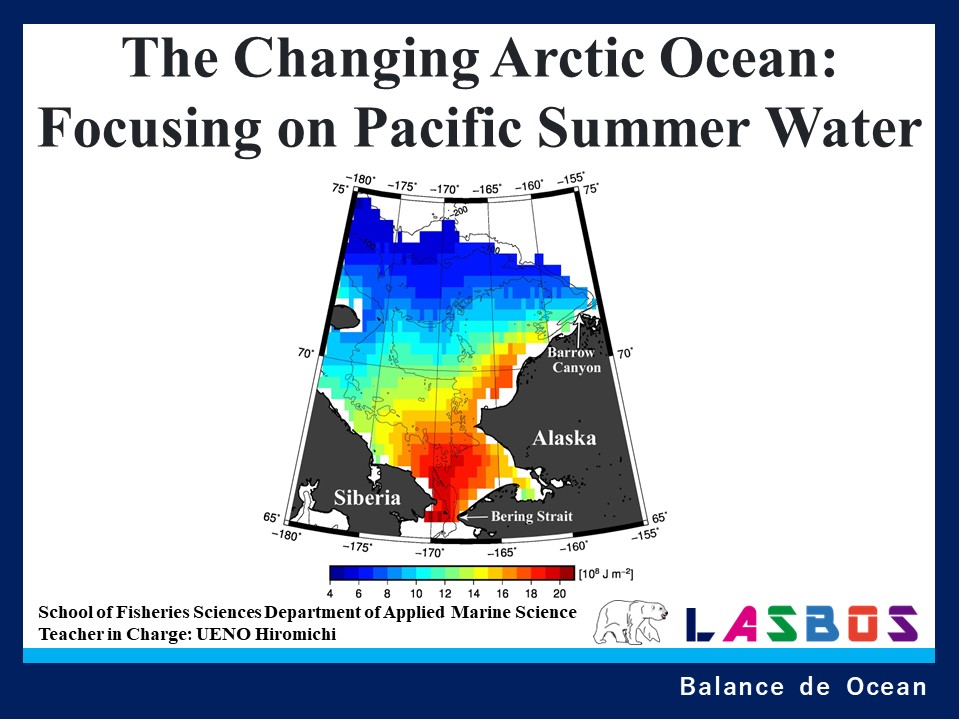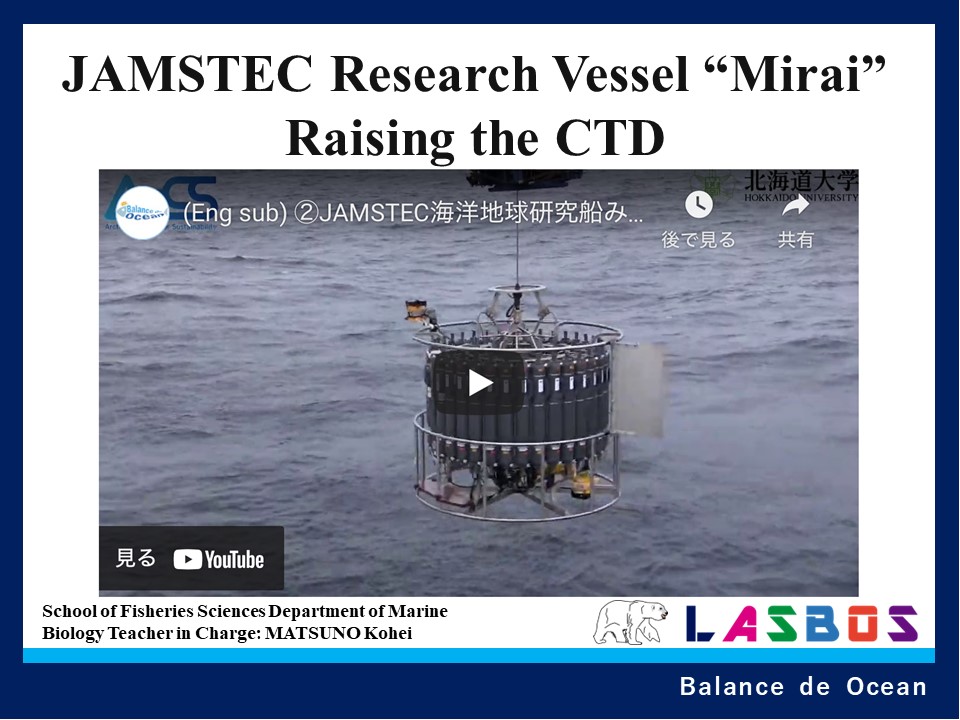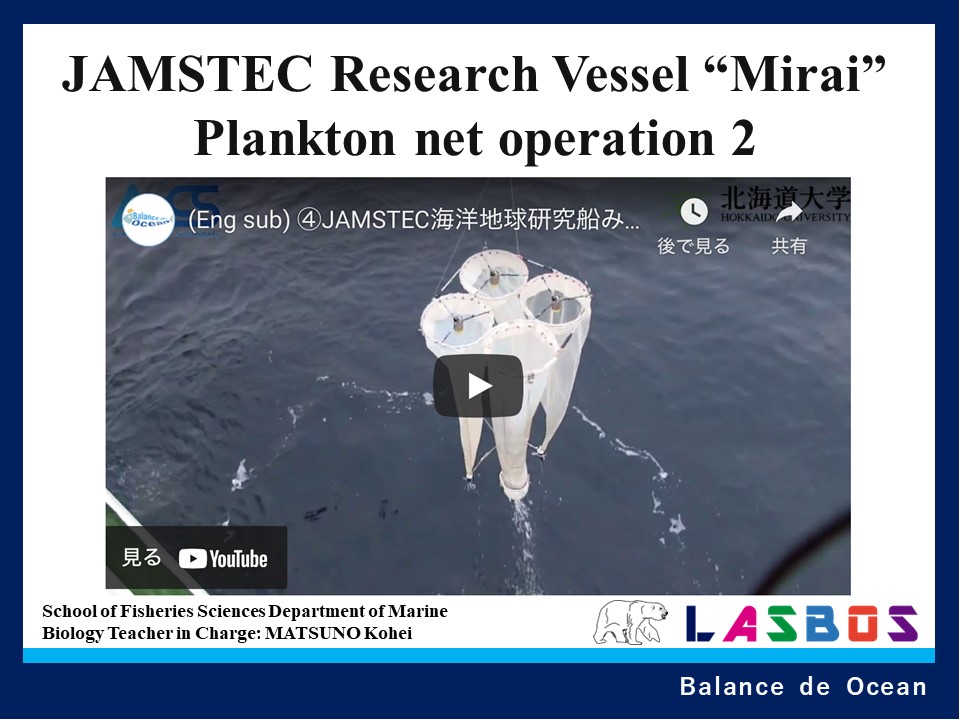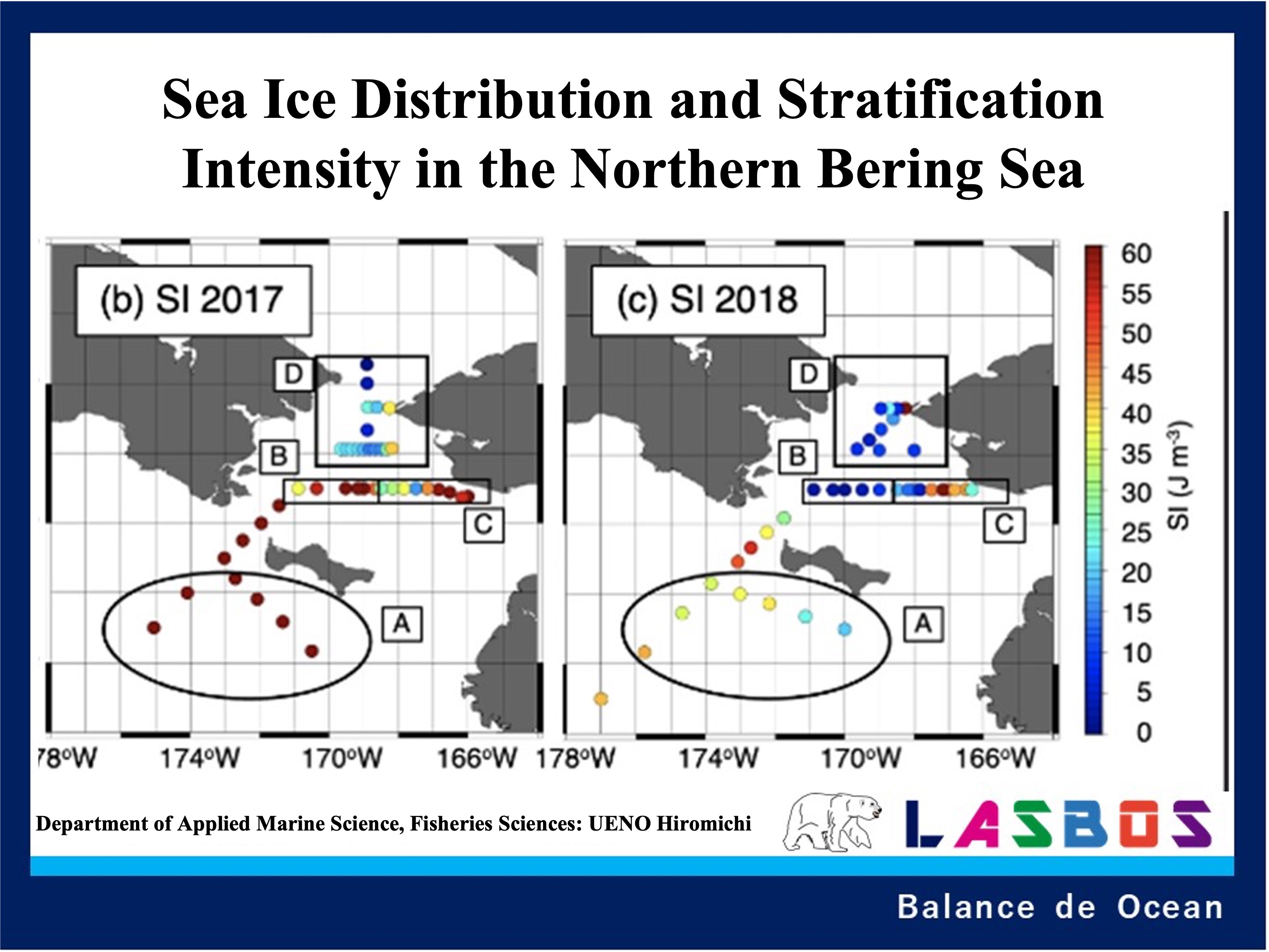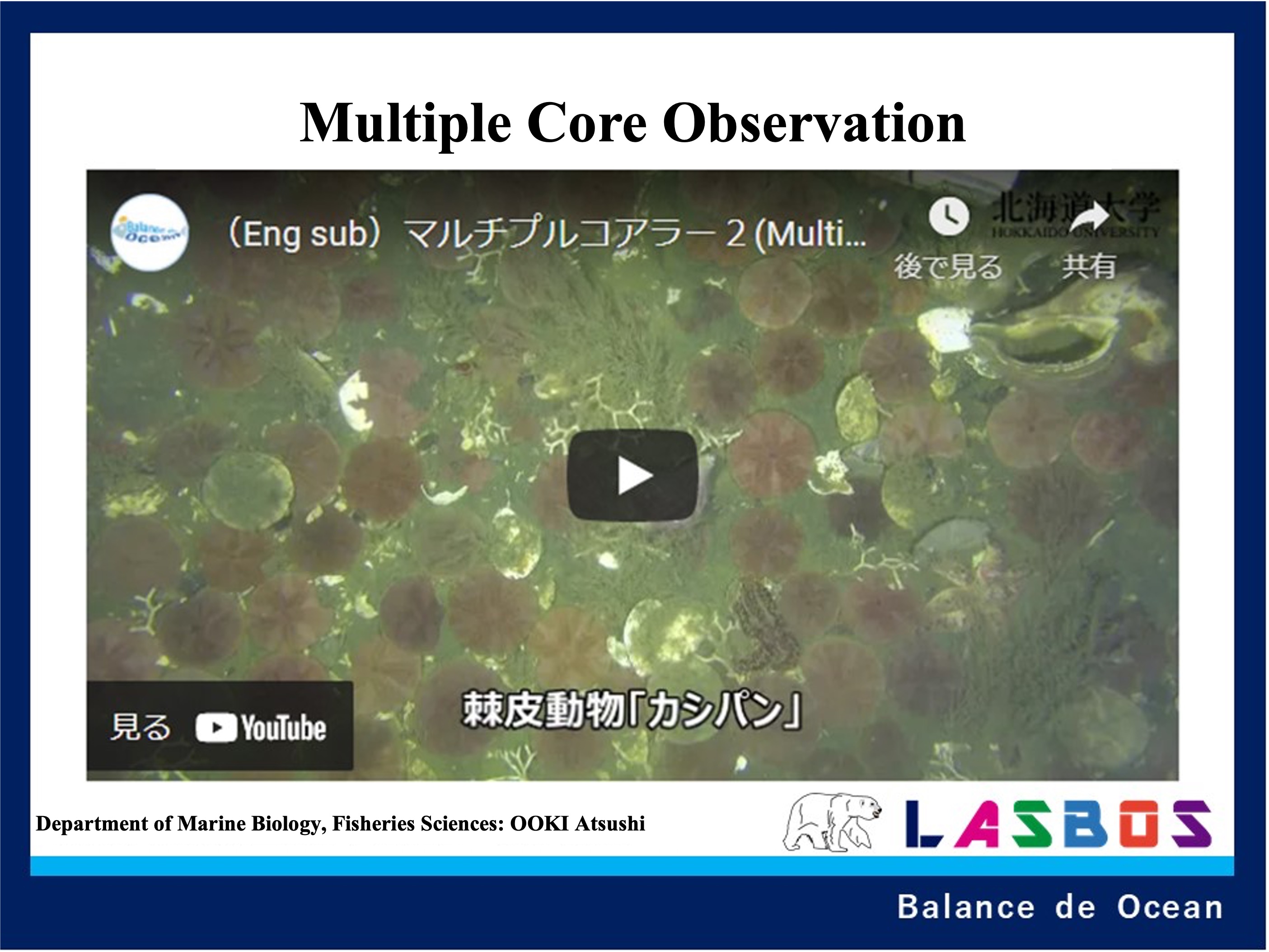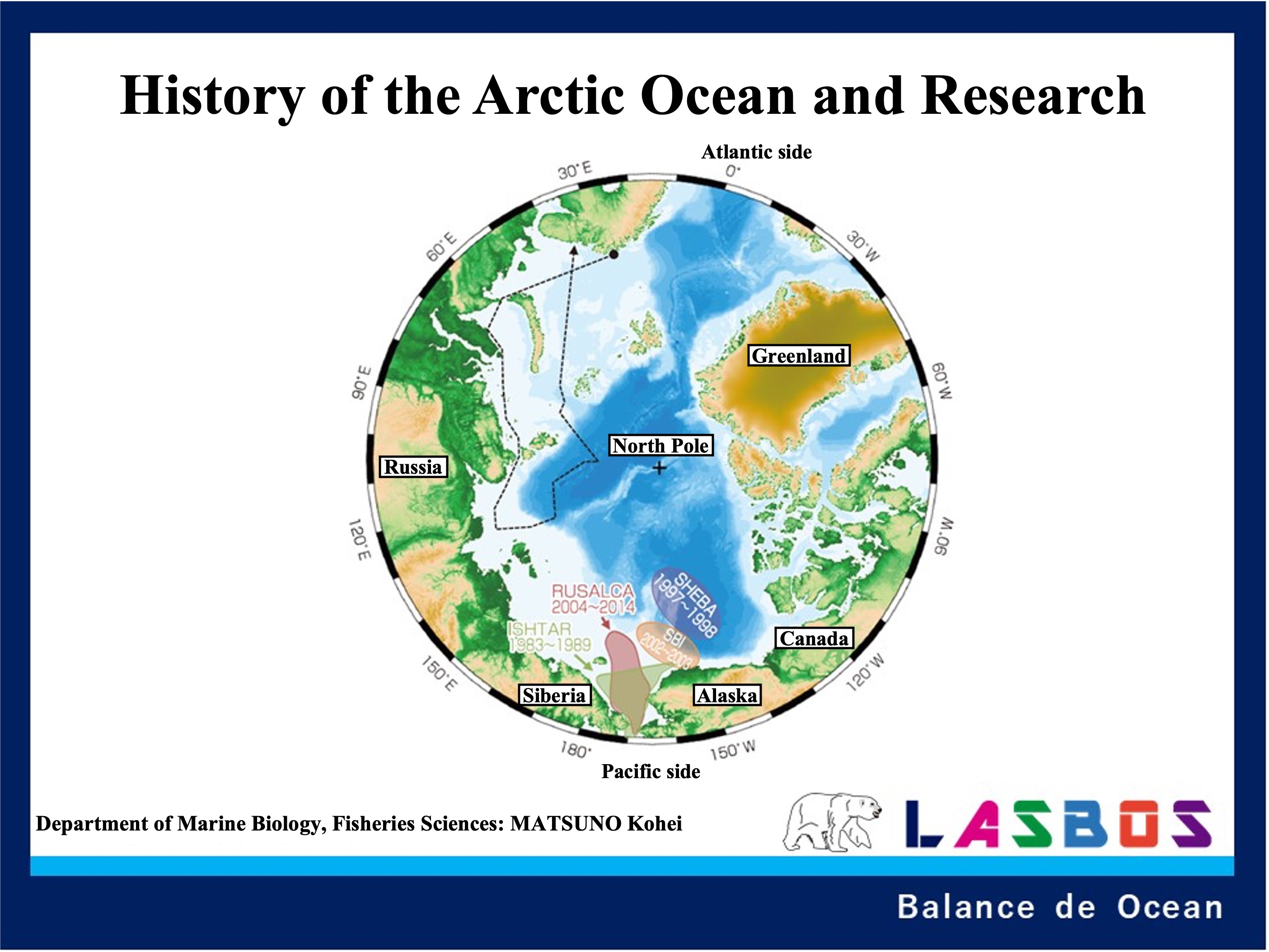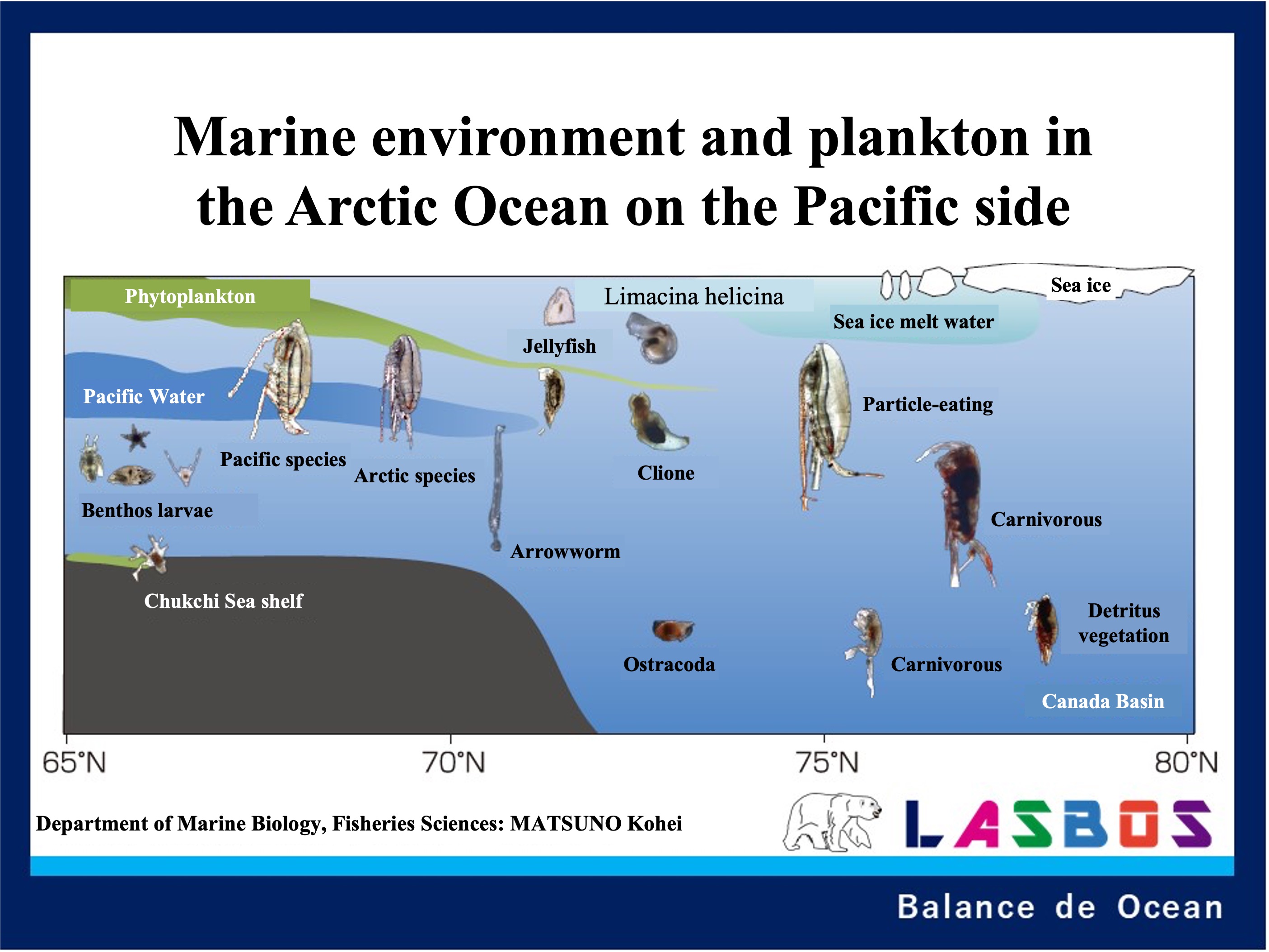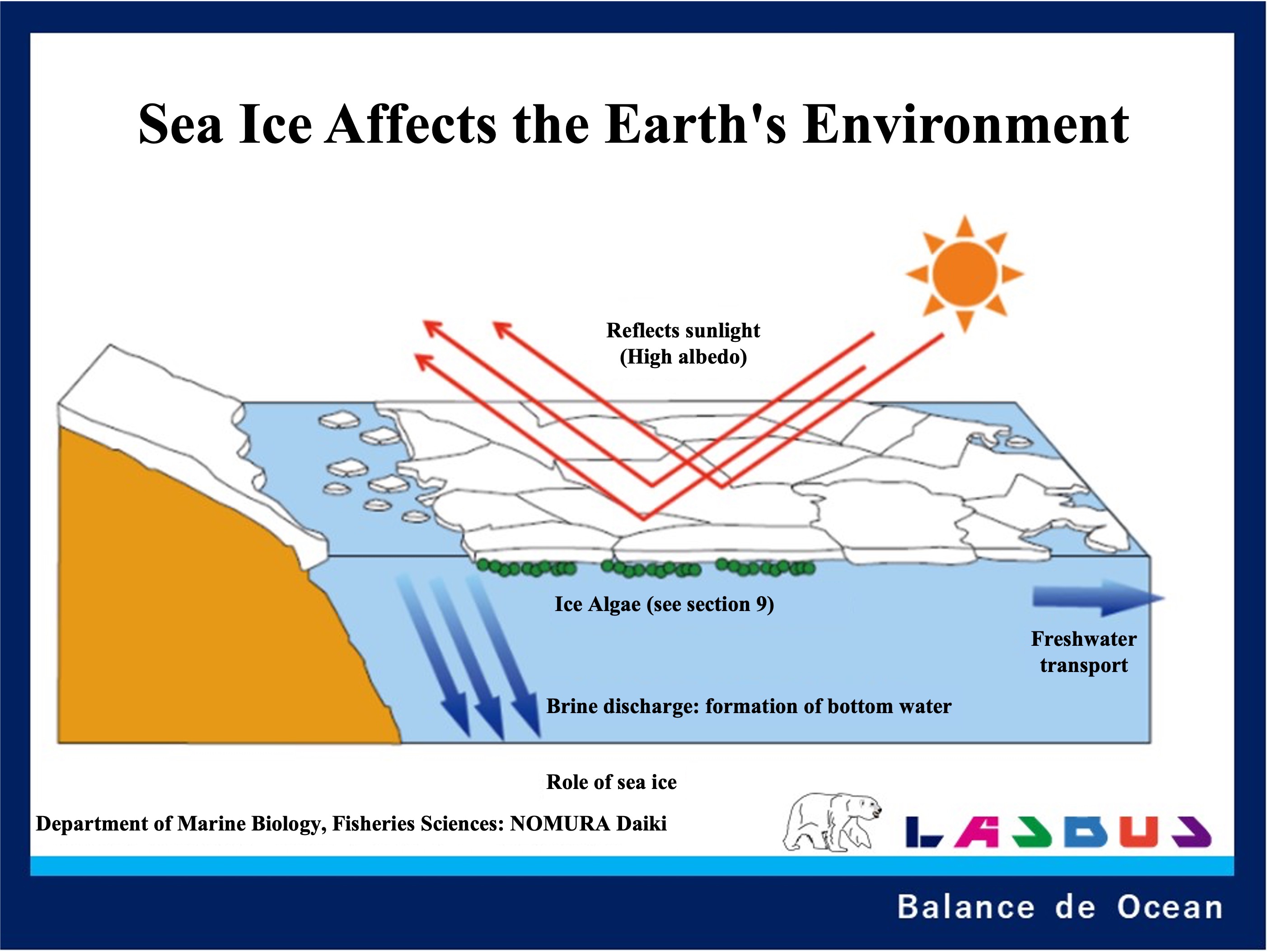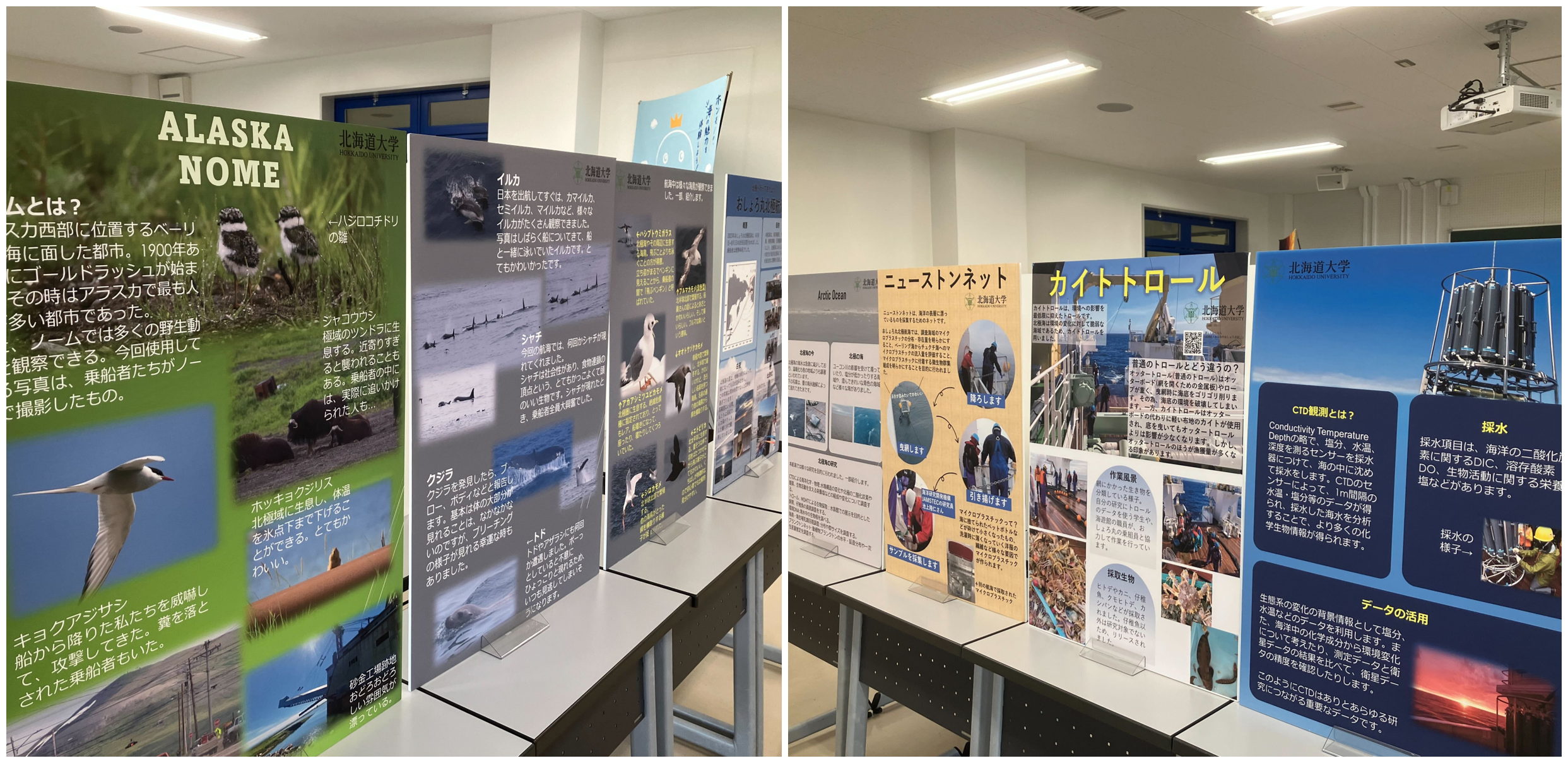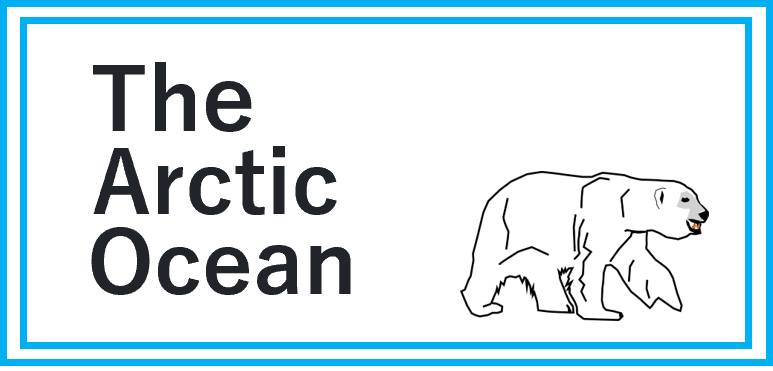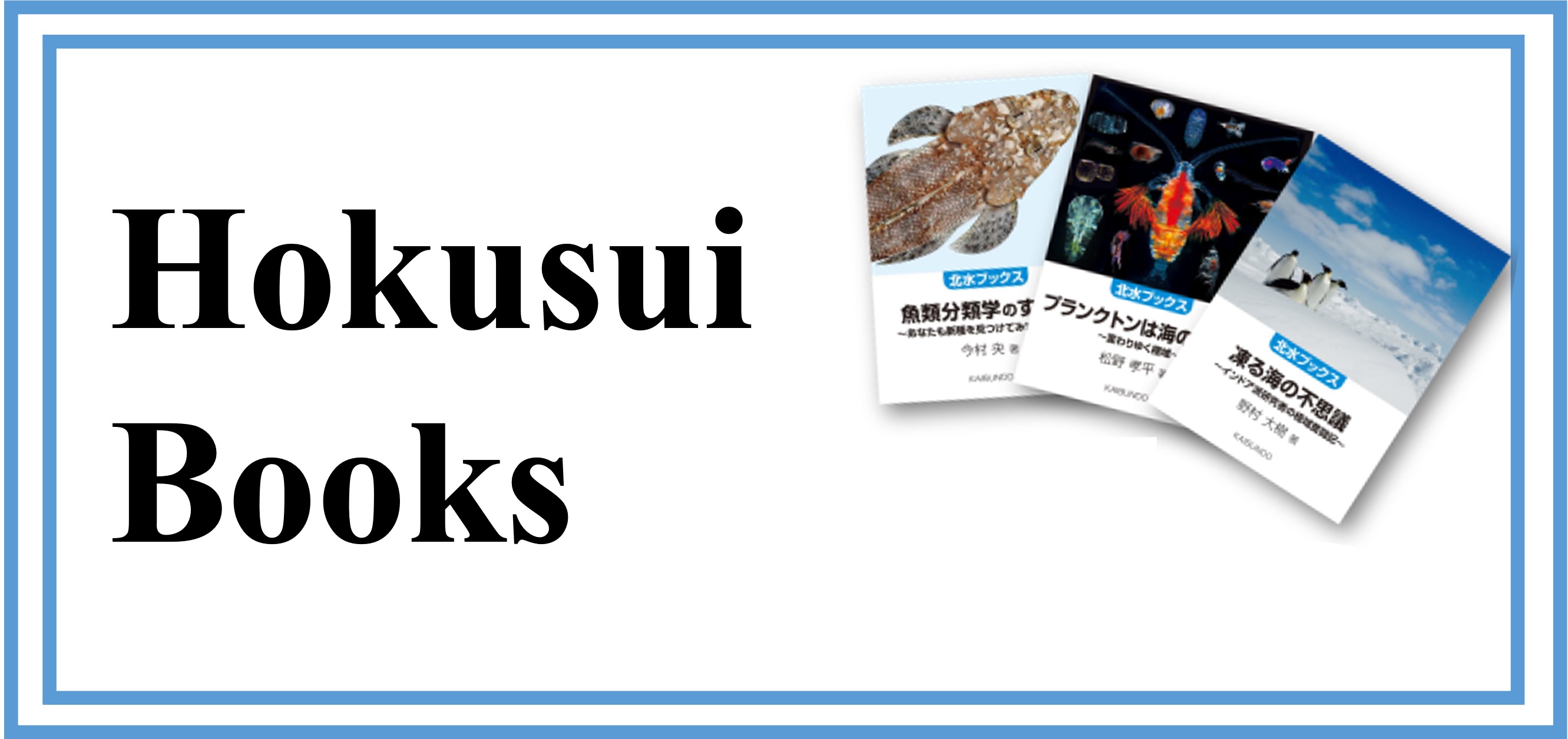Oshoro-Maru Arctic Cruise 2023
セクションアウトライン
-
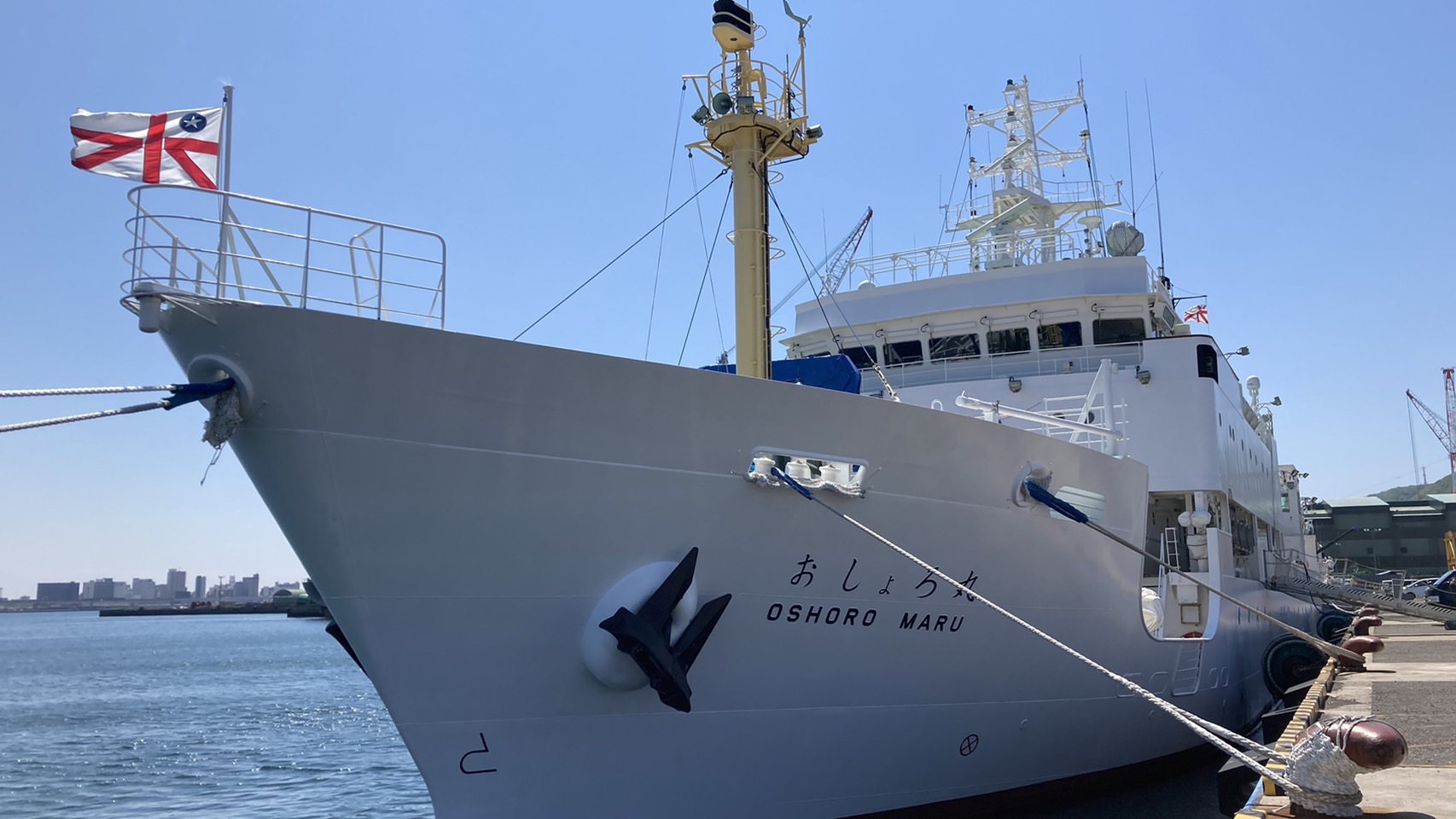
Oshoro-Maru @ Hakodate
For two months beginning in June 2023, the Oshoro-Maru, a training ship of Faculty of Fisheries Sciences, will make a cruise from the Bering Sea to the Chukchi Sea, the Arctic Ocean's marginal sea. This will be the first foreign cruise for the Oshoro-Maru in five years, since 2018.
-
-
- Hydrographic observation (water temperature, salinity, etc.): CTD, water sampling
- Ocean chemical observations (carbonate chemistry, nutrients, dissolved organic matter, radionuclides, etc.): water sampling
- Phytoplankton and zooplankton sampling: Various nets, cameras, and mud sampling
- Fish sampling: various nets and trawls
- Environmental DNA sampling: water sampling
- Microplastic sampling : neuston net
- Seabird visual inspection
- Marine mammal visual inspection
-
Background and purpose of the cruise
Arctic sea ice has declined significantly over the past several decades and is expected to decline further in the future. In addition, the Arctic region has warmed more markedly than the global average and is expected to continue to warm more significantly than the global average, which is known as Arctic Amplification. Sea ice reduction and rising sea surface temperatures are changing lower-trophic ecosystems such as phytoplankton to higher-trophic ecosystems such as marine mammals, affecting biodiversity. The Joint Statement of the 3rd Arctic Science Ministerial in Tokyo in 2021 noted that "The effect of the loss of sea ice is speeding up coastal erosion and marine ecosystem change, which can have broader socio-economic impacts in the Arctic." In order to conserve Arctic ecosystems and biodiversity, it is important to collect scientific information through surveys and monitoring, and to take measures based on a better understanding of this information.
The Oshoro-Maru has made many contributions to our understanding of environmental changes in the Arctic and their impact on ecosystems. For example, data analysis of fish sampled by the Oshoro-Maru between 1990 and 2013 showed that the community structure of benthic fishes such as walleye pollock is strongly influenced by the timing of sea ice retreat (Nishio et al., 2020). Recently, we conducted observations in the northern Bering Sea to southern Chukchi Sea in 2017, when sea ice melt in the northern Bering Sea was as usual, and in 2018, when sea ice melt was earlier than recorded (Ueno et al., 2020). The results revealed that early sea ice melt reduces large zooplankton that are useful as food for fish, resulting in a degraded feeding environment for fish (Kimura et al., 2022). In addition, visual inspection of seabirds indicated that seabirds had difficulty finding food organisms in 2018, when sea ice melt was faster than recorded (Nishizawa et al., 2020).
Supported by the Ministry of Education, Culture, Sports, Science and Technology (MEXT) Arctic Challenge for Sustainability (ArCS II), this cruise will cover the area from the northern Bering Sea to the Chukchi Sea, the marginal sea of the Arctic Ocean, to clarify changes in ocean thermal and material circulation and the marine ecosystem from primary production (phytoplankton) to higher organisms (marine mammals, etc.) by collecting samples for oceanographic observations and breeding experiments, visual inspections, and other methods. Through these observations, we aim to gain a comprehensive understanding of the impact of changes in the marine environment on marine ecosystems. In addition to fish sampling by net trawling, environmental DNA (DNA derived from organisms present in the environment) will be observed in this observation to capture changes in fish community structure from multiple perspectives.
The training ship Oshoro-Maru is a "campus at sea," and the various oceanographic observations conducted on this cruise are conducted as practical training for undergraduate and graduate students. Most of the undergraduate and graduate students who were on board the Oshoro-Maru mainly for research are graduate/undergraduate students of School of Fisheries Sciences, Hokkaido University, but graduate students from other universities, including those from the University of Alaska Fairbanks, with which we have an inter-university exchange agreement, will also be on board the ship to conduct observations and collect data related to their master's and doctoral dissertations. In addition, during the second half of the cruise (Leg 3: Nome, Alaska, U.S.A. to Hakodate, Japan), an open course for undergraduate students from all over Japan will be held for the first time, based on ArCS II Priority Subject 1: Capacity Building and Research Promotion. Ten students from national and private universities, including those from humanities/social-science departments, are scheduled to get board the ship not only for conducting natural science oceanographic observations but also learning the history and culture of the Arctic region. We hope that the students will not only become Arctic researchers, but also be involved directly or indirectly in solving various problems in the Arctic region and spreading knowledge about the region through various social activities such as business, government, education, and non-profit organizations. (https://www.nipr.ac.jp/arcs2/info/oshoro-2023/)
-
Asahi Shimbun reporter Nakayama is on board the Oshoro Arctic cruise.We are connecting with Japan by phone and introducing what is going on in the Oshoro-Maru.Please take a look.
From Asahi Shimbun Event Office YouTube Channel
- I went to the Arctic Ocean. I was impressed by the drift ice. On board the "Oshoro Maru" (Part I)
- I encountered birds that travel between the North and South Poles. On board the "Oshoro Maru" (Part Ⅱ)
-
On July 12, the Oshoro-Maru departed Nome, Alaska, U.S.A., for Leg 3 (open cruise).
Seventeen new members, including 10 open course students, got on board from Nome, giving a new atmosphere to the ship.
After the departure, the ship will head for the ice edge of the Chukchi Sea around 70°N while conducting observations and practical training on marine mammals and seabird visual inspection.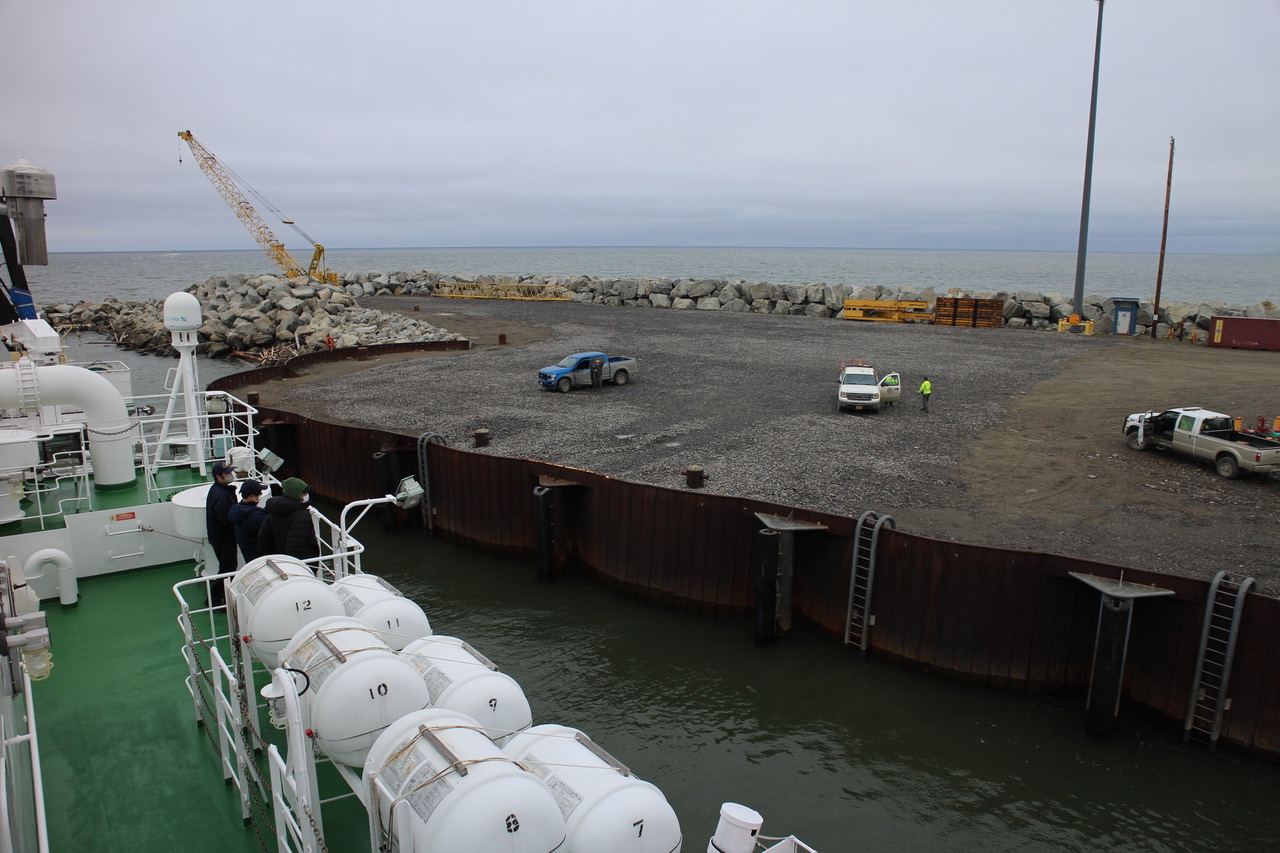 The Oshoro-Maru departing from the Port of Nome (July 12, 2023; photo by UENO Hiromichi)
The Oshoro-Maru departing from the Port of Nome (July 12, 2023; photo by UENO Hiromichi) -
On July 14, drift ice was sampled at the northernmost point of this cruise, 69°58.3' N, 168°29.3' W. The drift ice came from an area where sea ice was concentrated (visible from the Oshoro-Maru), and had partially drifted away from the area. The sampled drift ice will be melted and examined for various constituents.
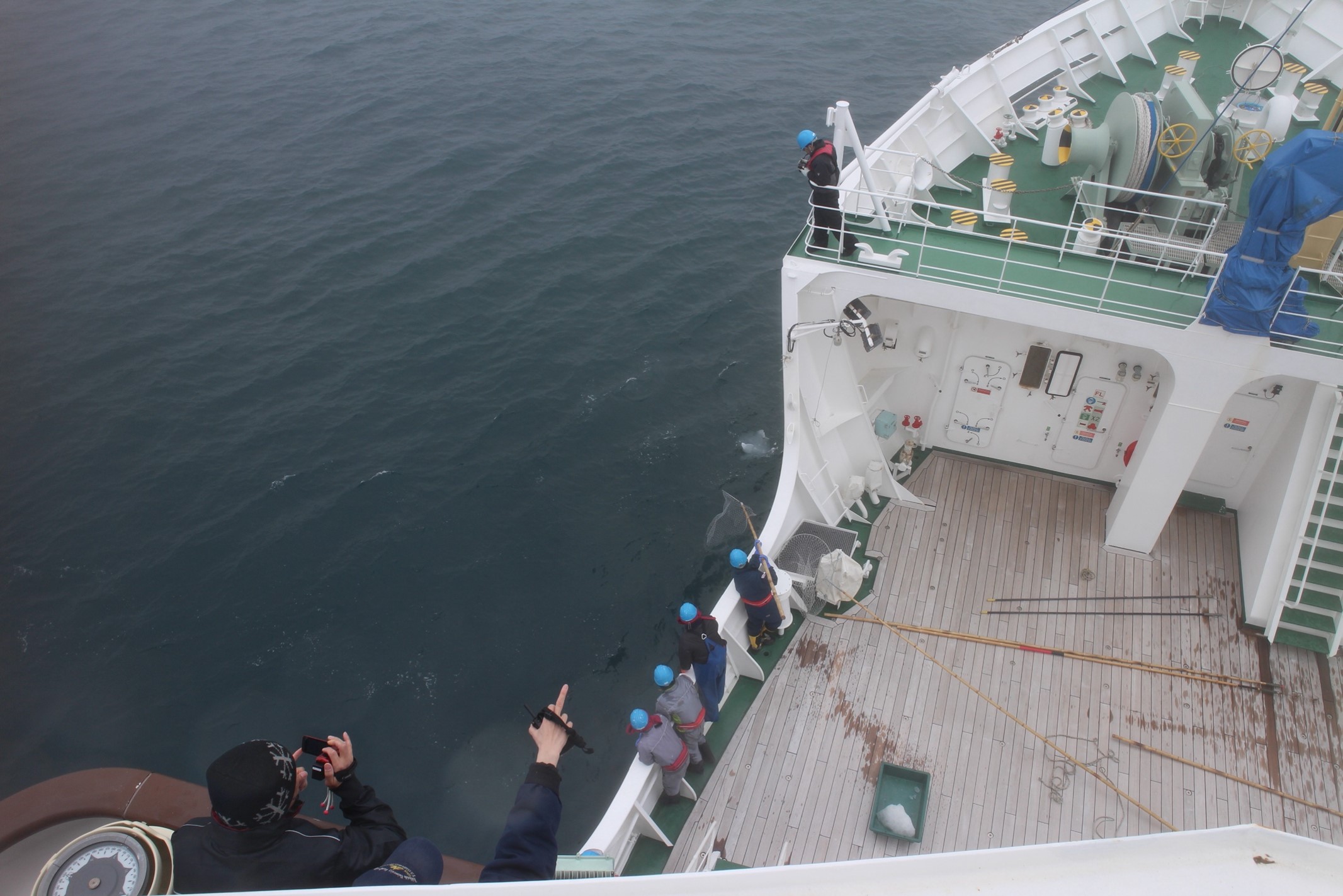
Drift ice sampling scene. The whitish object floating in the upper right of the net in the center of the photo is drift ice. After this photo was taken, the ice was brought on board by the crew's skillful netting. (July 14, 2023; photo by UENO Hiromichi) -
On July 15, the first kite trawl was conducted on Leg 3 of the Arctic cruise. A kite trawl is a bottom trawl with minimal impact on the environment. On this day, we were able to collect many organisms including crabs, shrimps, starfish, and benthic fishes.
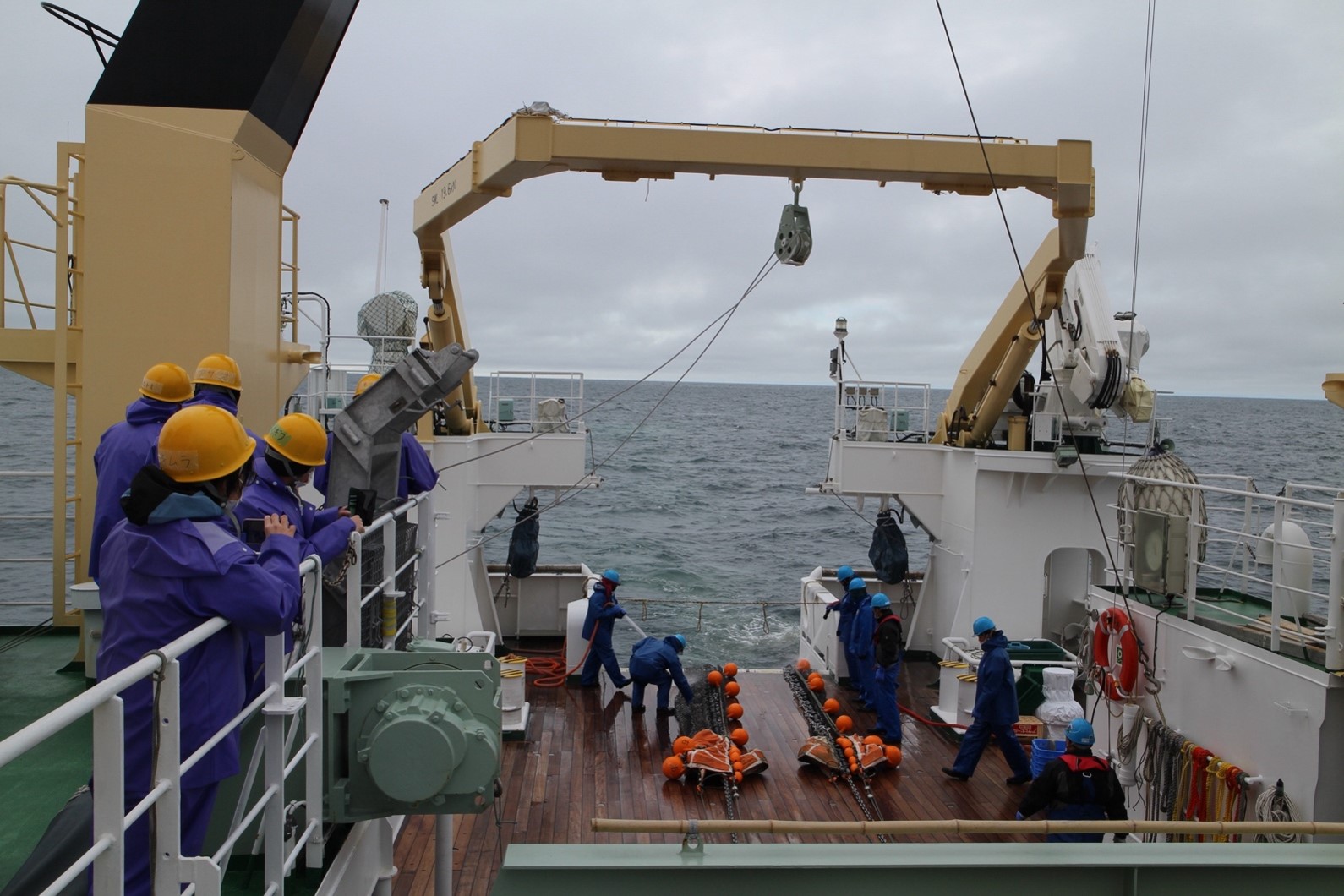
Kite trawl cast netting scene (July 15, 2023, at 69.5°N; photo by UENO Hiromichi)
-
A commemorative photo was taken just before the last observation point in the Chukchi Sea. The day after this commemorative photo, the Oshoro-Maru passed through the Bering Strait and entered the Bering Sea.
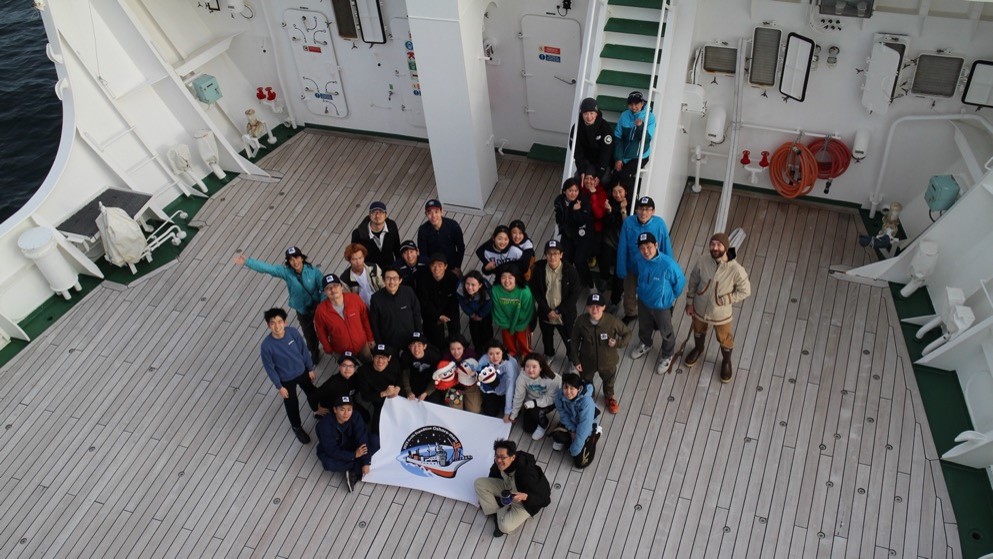
July 16, 2023 at the Chukchi Sea
-
The last major observation was conducted in the waters west of St. Lawrence Island, Alaska, USA. The photo shows a mid-water trawl net called MOHT. At this station, MOHT was able to collect juvenile fish, cliones, and copepods. From now on, the ship will only sail to Hakodate, except for nighttime sampling with the plankton net.
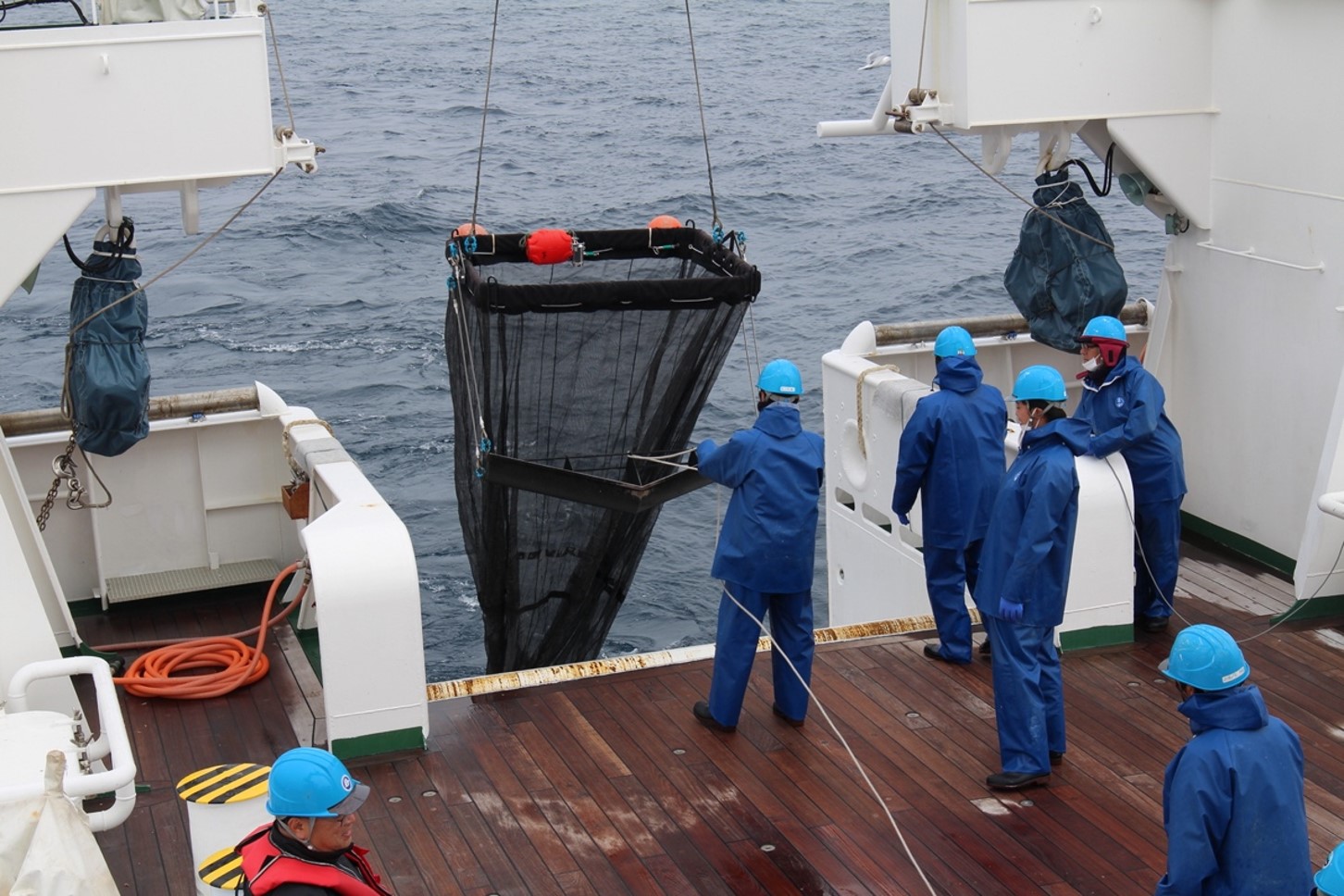
MOHT cast netting scene (July 18, 2023, off the west coast of St. Lawrence Island; photo by UENO Hiromichi) -
The oceanographic observation for students participating in the public training ended yesterday, and lectures and group discussions on the humanities and social sciences have begun. On the first day, the students experienced the changing Arctic through the Arctic board game "The Arctic" a learning tool for Arctic research. After that, they learned about the history of Arctic research and policies in Japan and the world, and had a group discussion about the future of Arctic research. Finally, group presentations were made.
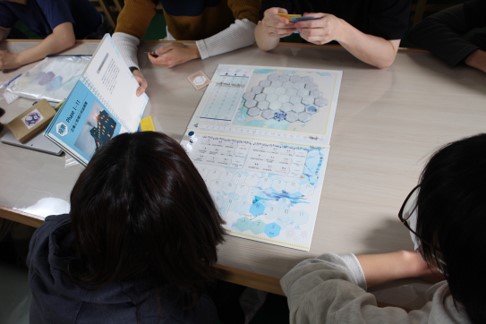
Arctic Board Game (July 19, 2023; photo by UENO Hiromichi) -
Since leaving Hakodate on June 8, the Oshoro Arctic cruise has not encountered any serious stormy weather, and observations have proceeded smoothly. However, some stormy weather began yesterday, and for the first time on this cruise, the use of washing machines was prohibited. The Oshoro Maru prohibits the use of washing machines in stormy weather because washing machines often malfunction when they are used in shaking conditions with wave heights exceeding 2.5 m. Hand washing and dryer use are allowed. The weather recovered quickly, and the prohibition on using washing machines was lifted after only one day.
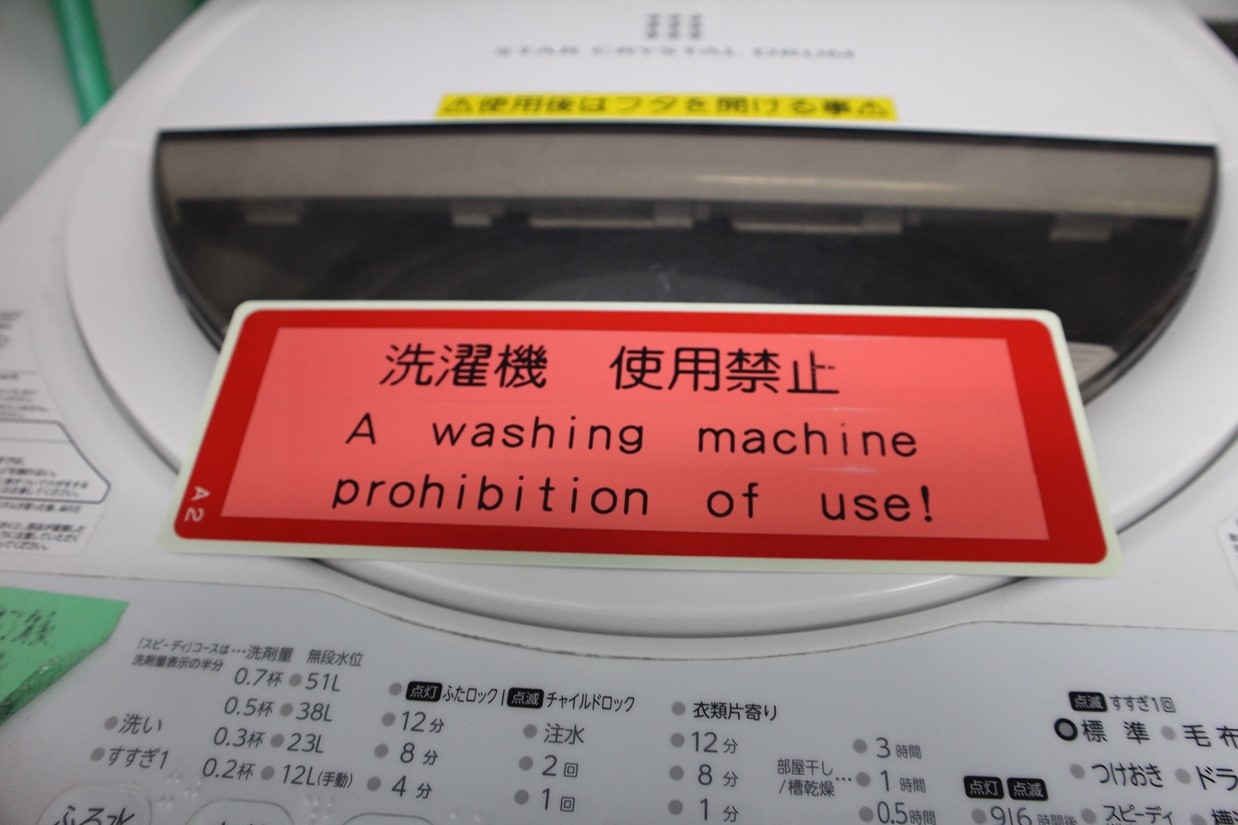
Tags prohibiting the use of washing machines (July 20, 2023; photo by UENO Hiromichi)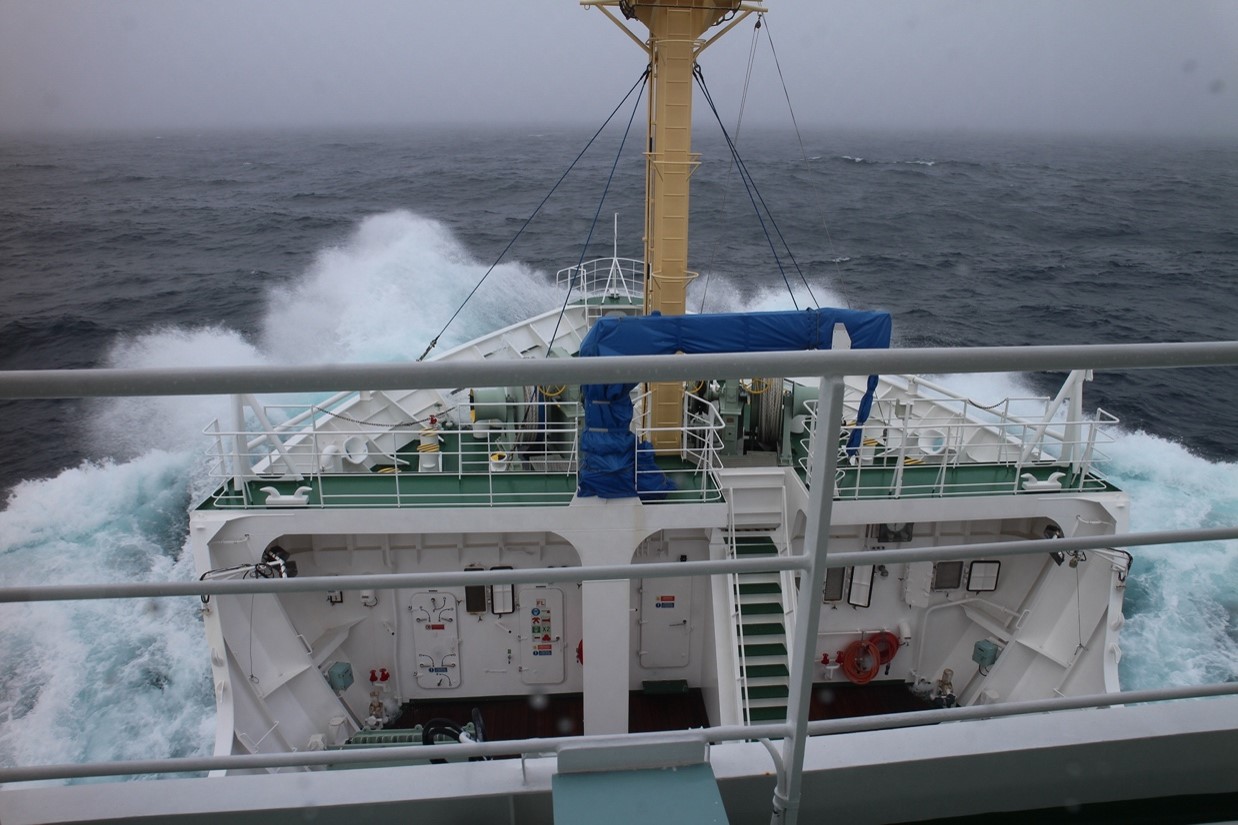
Bow of the Oshoro-Maru seen from the bridge (July 20, 2023; photo by UENO Hiromichi) -
Reporter NAKAYAMA from Asahi Shimbun, who is participating in the Arctic Challenge for Sustainability II (ArCS II) Oshoro-Maru open course, gave us a lecture on the Arctic and Antarctica. She talked about the history of Antarctic observation, the content of the observation, her own experiences in wintering over the Antarctic, and her coverage in Greenland. The students continued to ask questions after the lecture. The next lecture will focus on the Arctic.
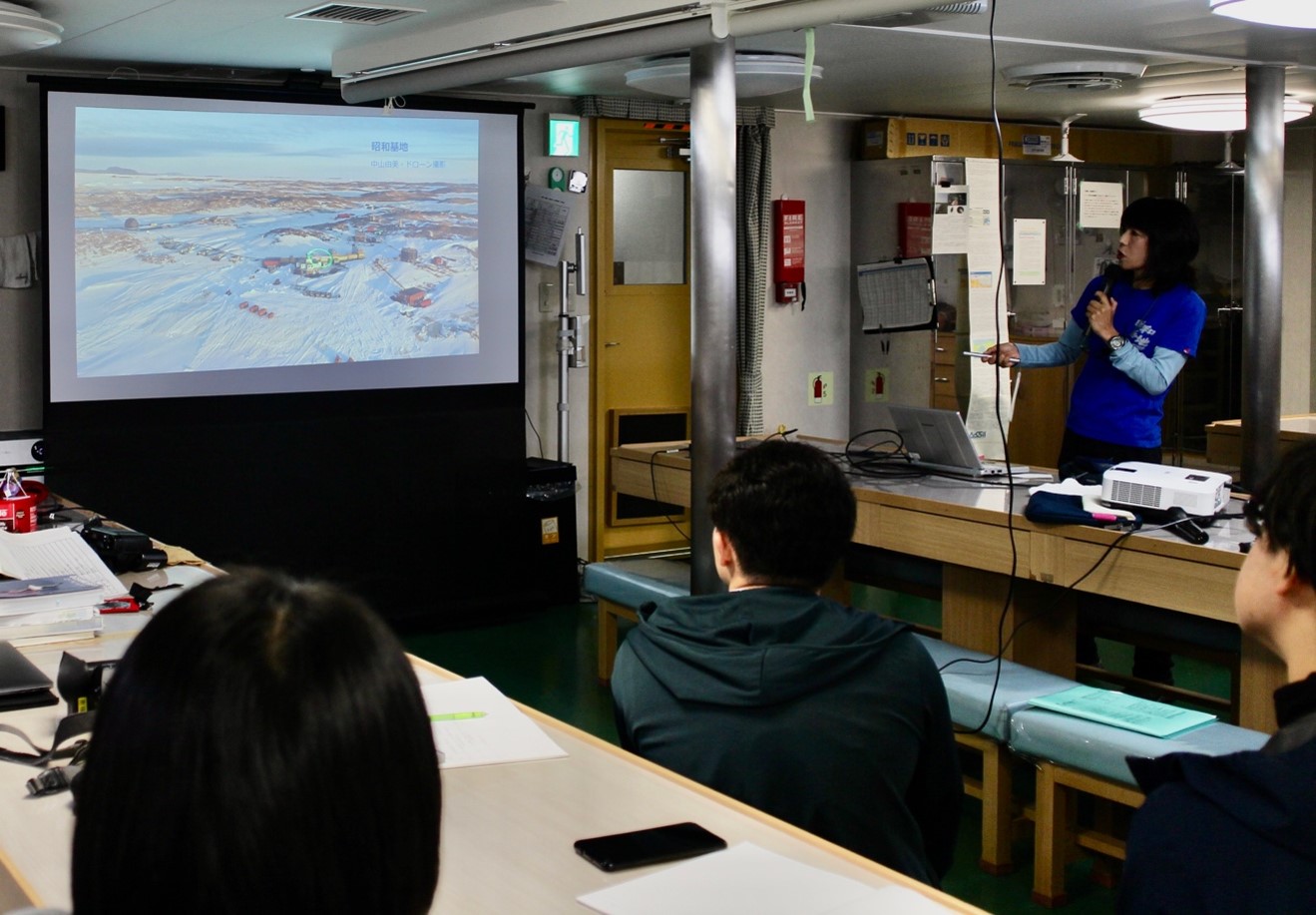
Lecture by reporter NAKAYAMA (July 20, 2023; photo by UENO Hiromichi) -
On July 22, the Oshoro-Maru passed through the Aleutian Islands and returned to the Pacific Ocean for the first time in about a month. As the ship passed through the Aleutian Islands, many marine mammals and seabirds could be seen. Also, since we crossed the date line, the day after July 22, which is the ship's time, will be July 24.
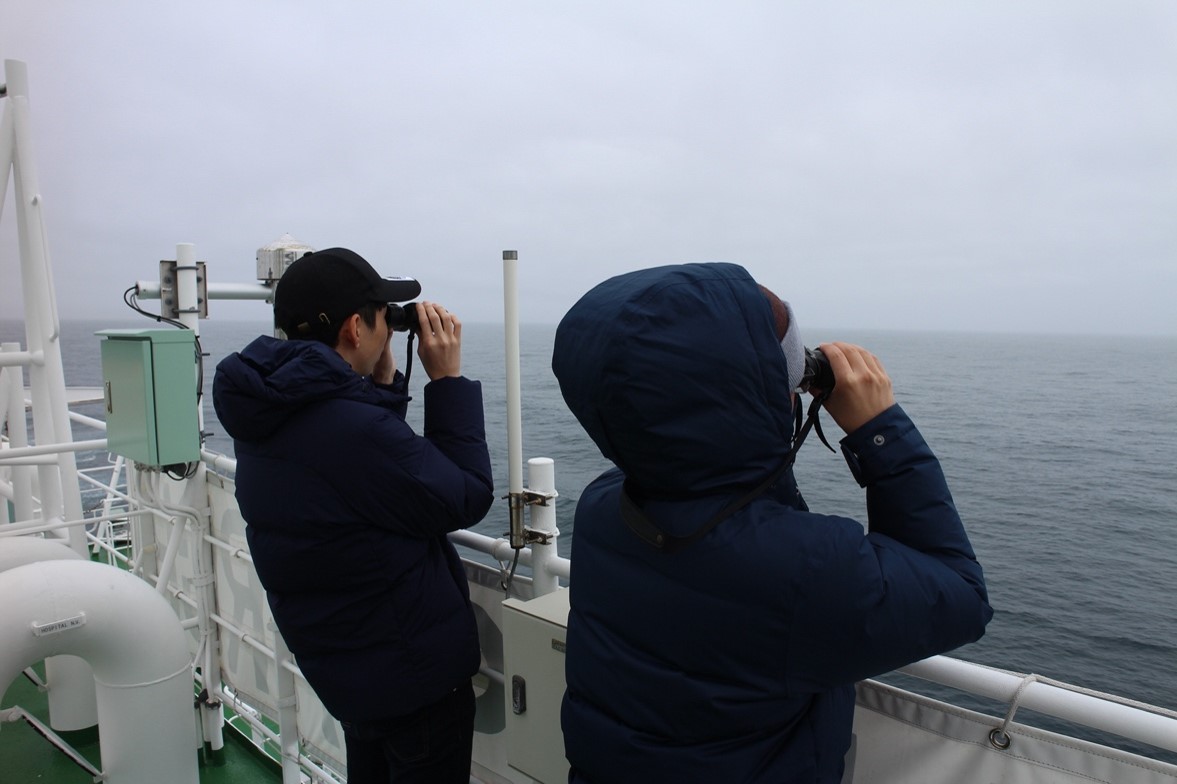
Students visually inspect marine mammals during the passage of the Aleutian Islands, (July 22, 2023; photo by UENO Hiromichi)
Students of the marine mammal and seabird visual inspection team (July 22, 2023; photo by UENO Hiromichi)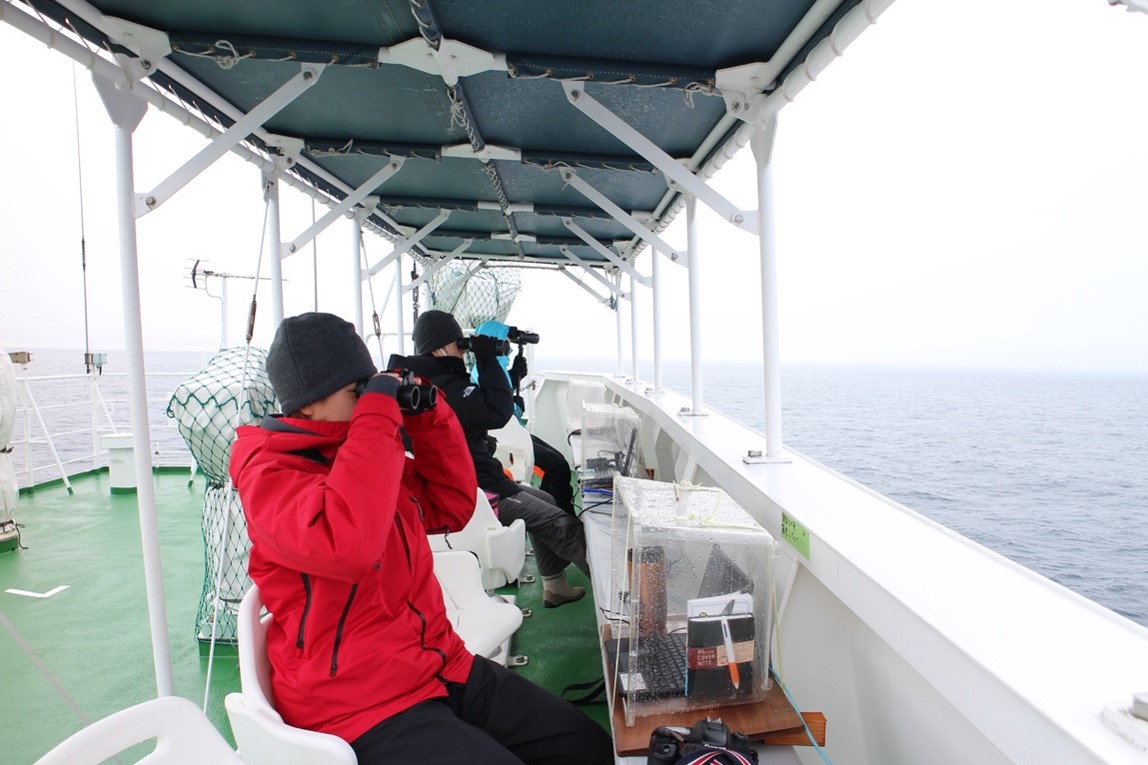
-
Nicholas Parlato, a doctoral student from the University of Alaska Fairbanks, gave a lecture on the history of indigenous peoples and development in the Arctic. Interpretation was provided by Dr. Onishi of the Arctic Research Center, Hokkaido University. The content was very interesting and the students asked questions in both English and Japanese (interpreted by Dr. ONISHI). In the afternoon, we had a group discussion and gave a brief group presentation in English on indigenous peoples and development.
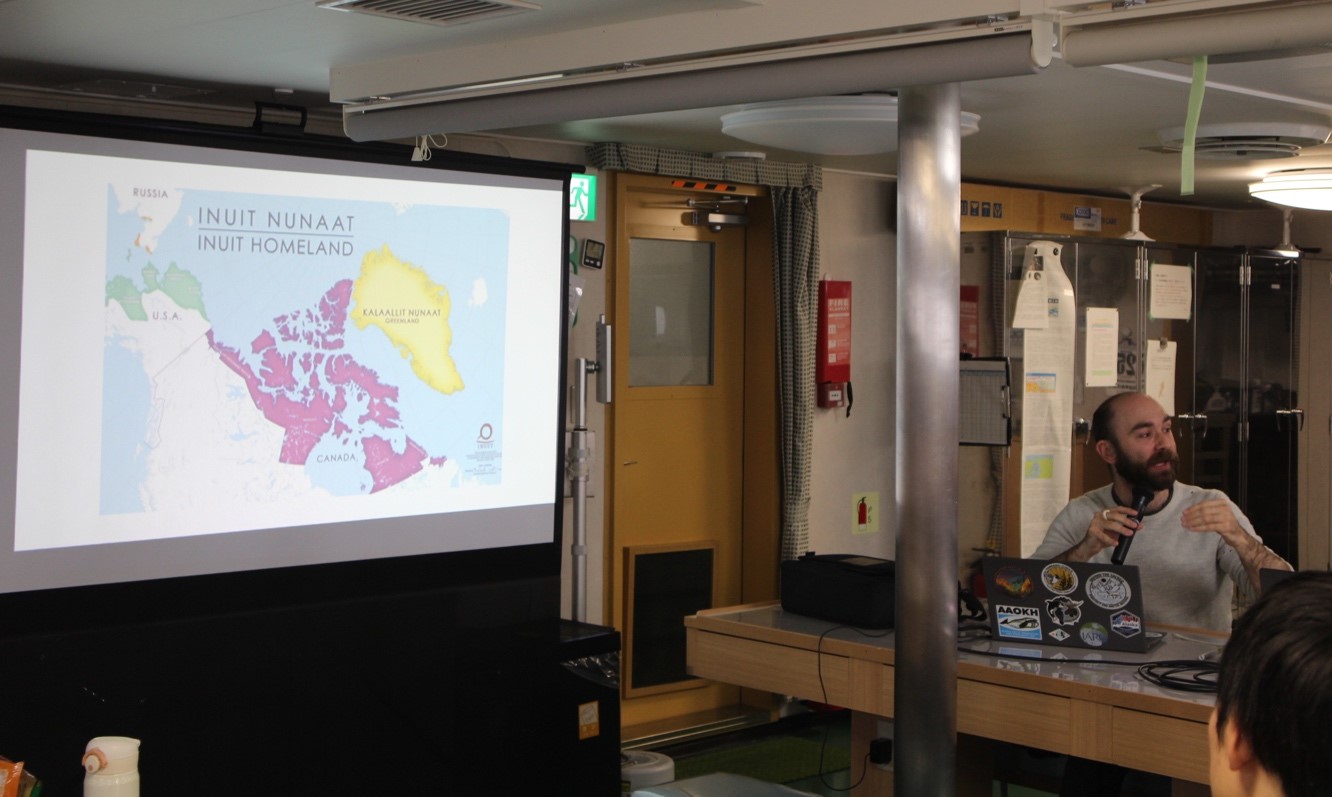
Lecture by Nicholas Parlato (July 25, 2023; photo by UENO Hiromichi) -
A Kaiyukan keeper, who was on board as a lecturer of the open course, gave a lecture on the fish and other benthic organisms collected during the observation, as well as the role of an aquarium and the work of a keeper. The students asked many questions, and the lecture was very lively. In the afternoon, the students had a chance to experience feeding the aquarium animals and changing the water of the clione as part of the practical training.
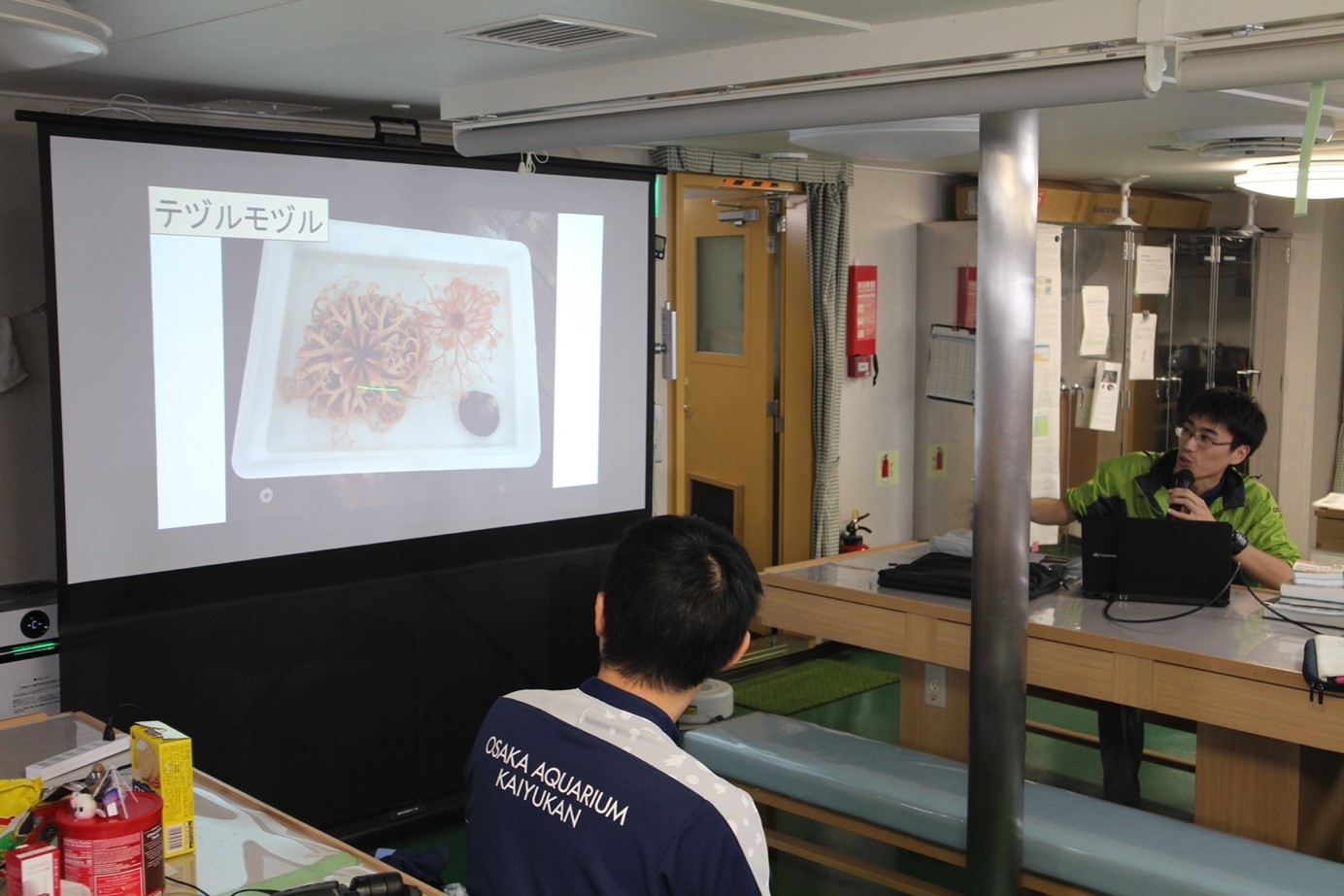
Lecture by a Kaiyukan keeper (July 26, 2023; photo by UENO Hiromichi)
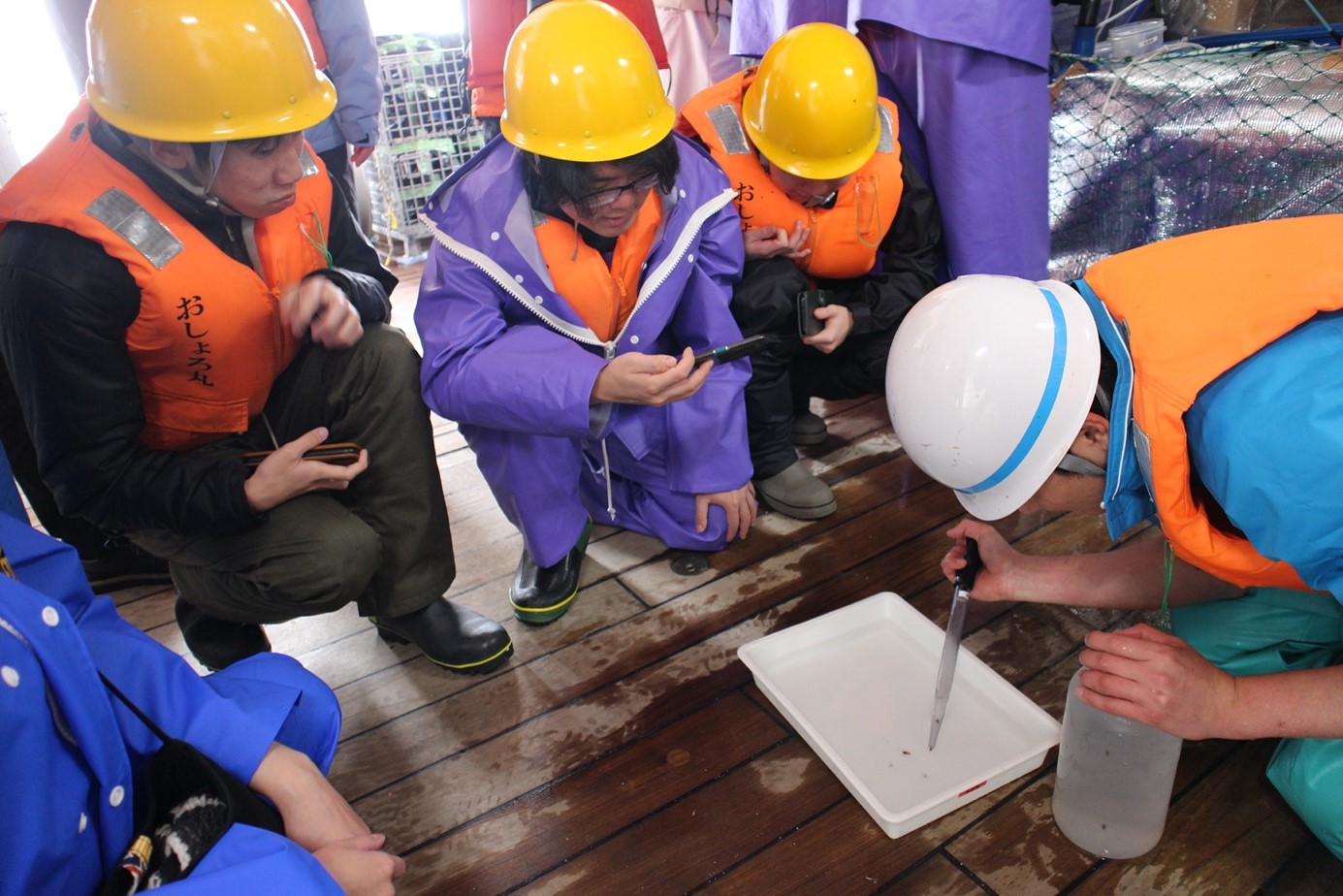
Clione's water change scene (July 26, 2023; photo by UENO Hiromichi)
-
On July 31, the ship arrived outside the Hakodate port. Tomorrow, August 1, she will return to Hakodate Port two days earlier than scheduled.
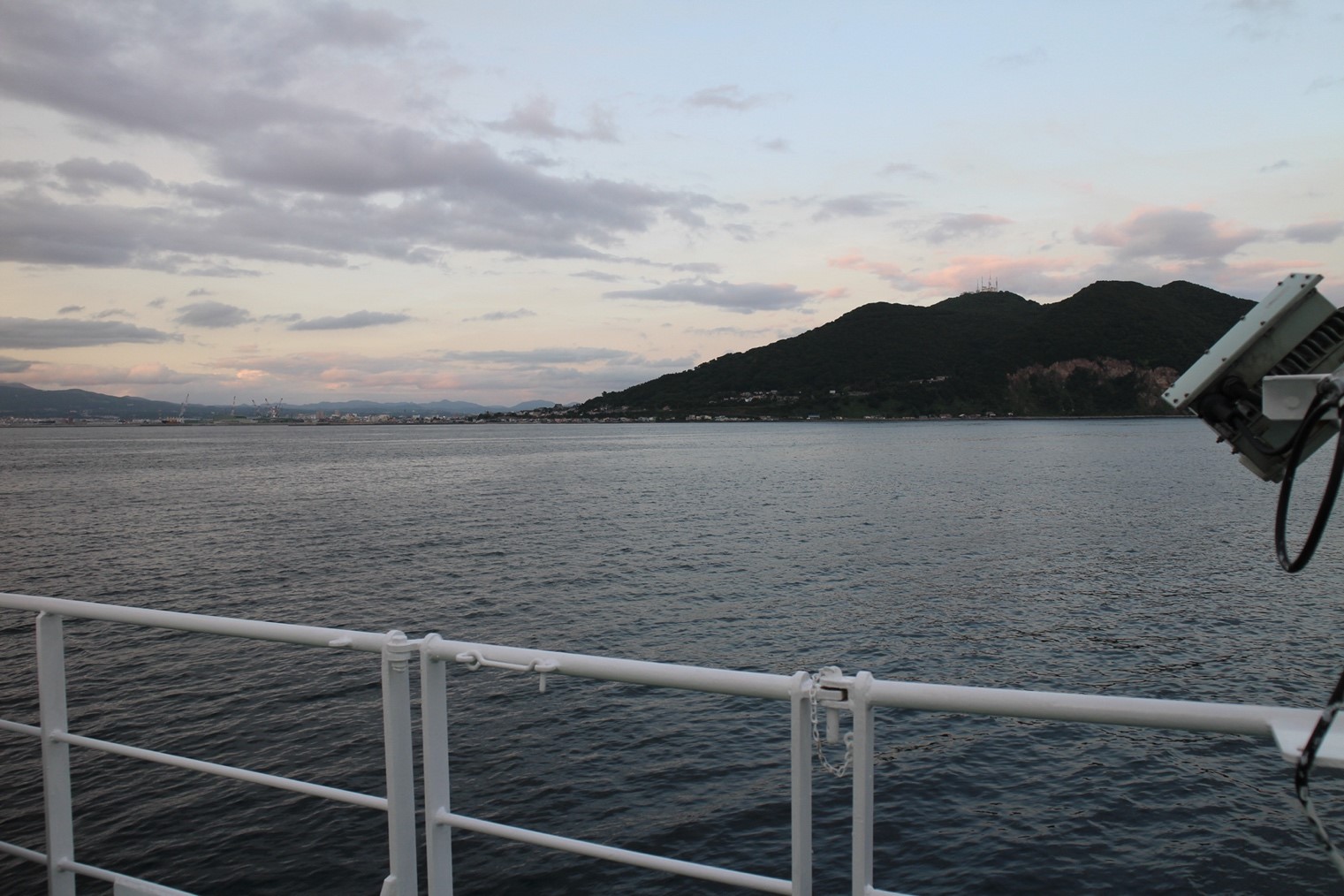
Mt. Hakodate seen from the Oshoro-Maru (July 31, 2023; photo by UENO Hiromichi) -
On August 1, we returned to Hakodate, where we were able to conduct all of our planned observations thanks to the surprisingly fine weather that we had enjoyed since our departure from Hakodate on June 8. We would like to express our sincere gratitude to the captain and crew, the students and researchers on board, and all those who supported this cruise from land. UENO Hiromichi (chief scientist of the Arctic cruise)
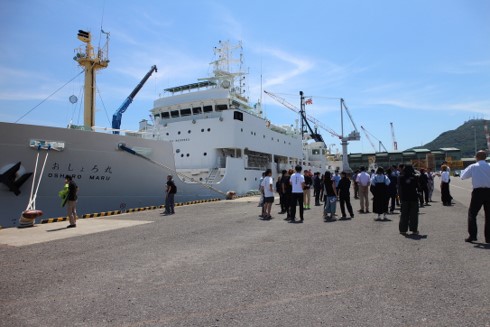
Boarders chat with friends, family, and colleagues who greeted them after the return ceremony (August 1, 2023; photo by UENO Hiromichi) -
-
-
530.1 KB


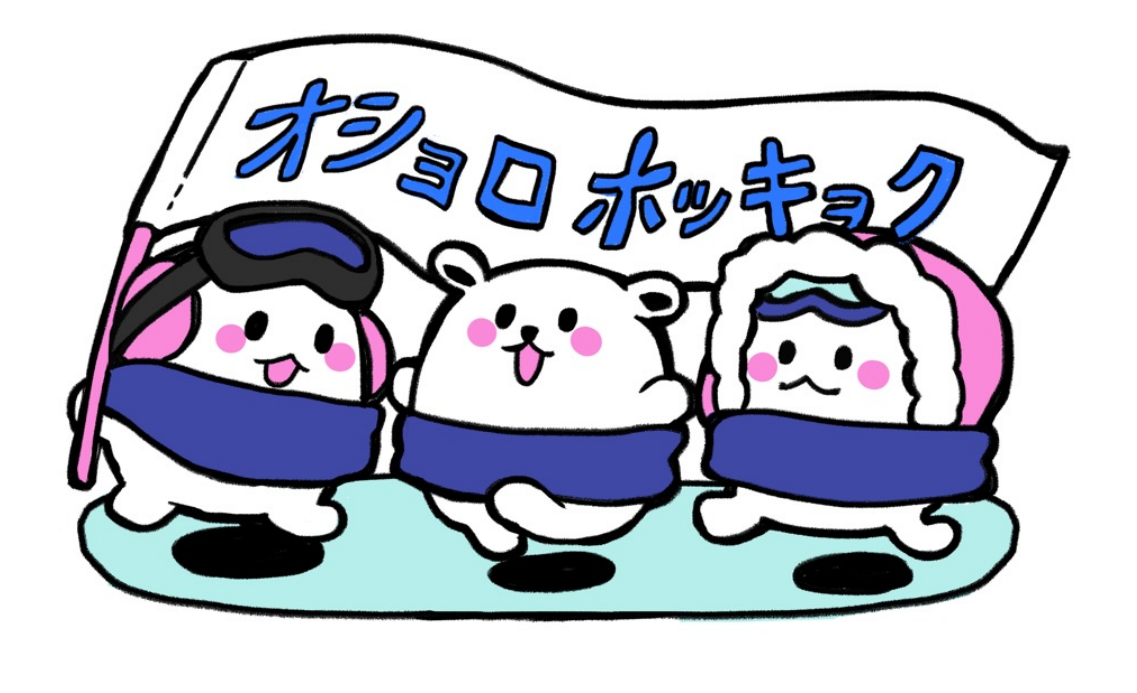
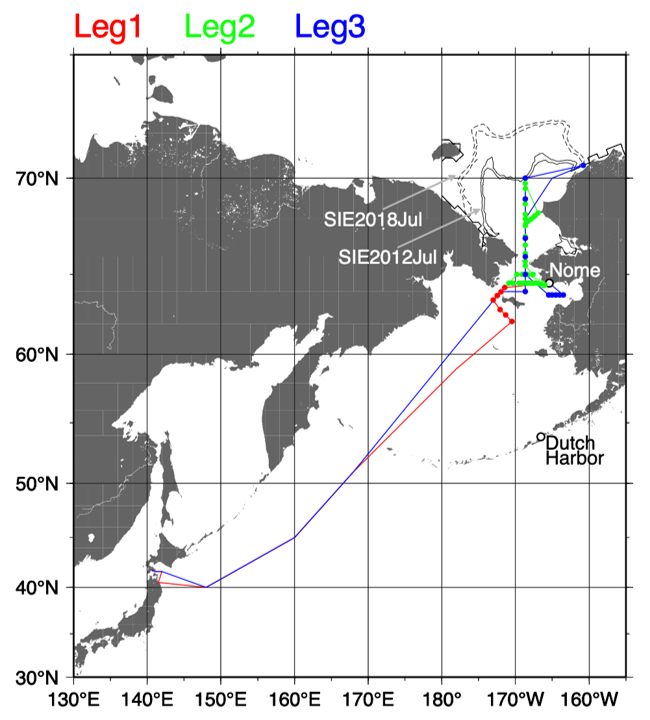 June 8: Departure from Hakodate
June 8: Departure from Hakodate